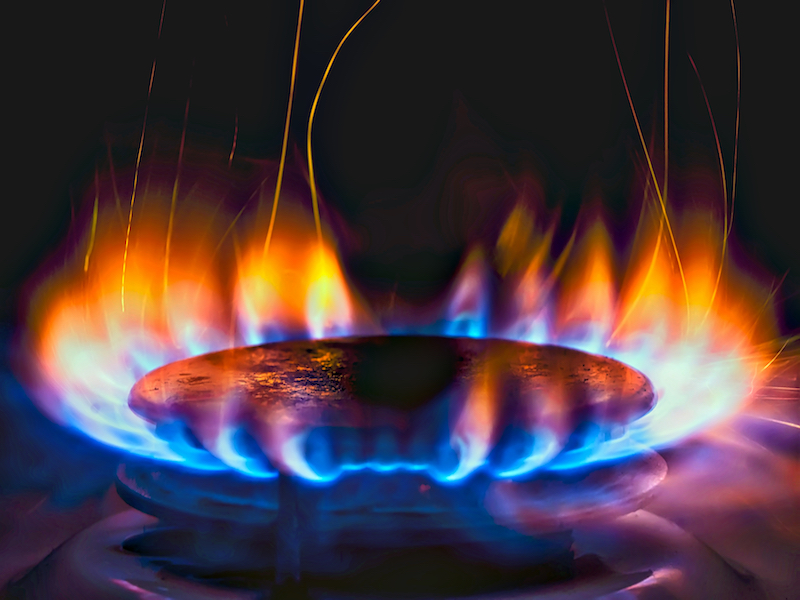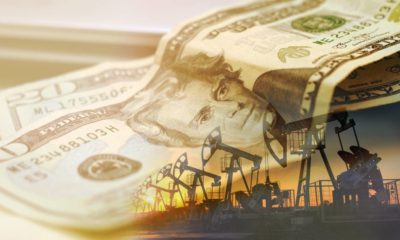commodity
Gas Outruns Oil As Market’s Leading Commodity

Markets Pour Cold Water On Oils Price Rally While Gas Increase Predictions Prove More Than Hot Air
Oil finished lower than hoped for after recently selling for its highest price for twelve months, mainly due to global production disruptions and diminishing US crude inventories.
Natural Gas, on the other hand, has seen its highest price point since September.
Oil prices fall across the board
July West Texas Intermediate Crude lost 67 cents, representing a fall of 1.3%, on the New York Mercantile Exchange.
Prices settled on Wednesday at $51.23 a barrel, with a recent reading even lower at $50.56.
August Brent Crude saw a similar incline, with a percentage loss of 1.3%, or 56 cents in monetary terms, to $51.95 a barrel.
This was after a Wednesday finish of $52.51 a barrel on the London ICE Futures Exchange.
That figure has been its highest since October.

Analysis: detail or disaster?
Analysts have had much to say on the matter.
Some see it as a small blip, while others see the price changes as symptomatic of wider trends which could continue in the long term.
An Energy Analyst at Citi Futures and OTC Clearing, Tim Evans, explains that this decrease is simply a modest technical rectification and that these decreases should not be cause for concern as they do not represent a long-term drop in the price of oil, such as has been seen in the last few years.
On the other hand, we have Barnabas Gan, an economist at OCBC Bank.
He believes that rising profitability, compared with the last 18 months, might be encouraging production.
The oil slump in the last few months, after a high in September, is symptomatic of increasing global supplies, according to him.
[ms_divider style=”normal” align=”left” width=”100%” margin_top=”30″ margin_bottom=”30″ border_size=”5″ border_color=”#f2f2f2″ icon=”” class=”” id=””][/ms_divider]
[ms_featurebox style=”4″ title_font_size=”18″ title_color=”#2b2b2b” icon_circle=”no” icon_size=”46″ title=”Recommended Link” icon=”” alignment=”left” icon_animation_type=”” icon_color=”” icon_background_color=”” icon_border_color=”” icon_border_width=”0″ flip_icon=”none” spinning_icon=”no” icon_image=”” icon_image_width=”0″ icon_image_height=”” link_url=”https://offers.thecapitalist.com/p/58-billion-stock-steal/index” link_target=”_blank” link_text=”Click Here To Find Out What It Is…” link_color=”#4885bf” content_color=”” content_box_background_color=”” class=”” id=””]This one stock is quietly earning 100s of percent in the gold bull market. It's already up 294% [/ms_featurebox]
[ms_divider style=”normal” align=”left” width=”100%” margin_top=”30″ margin_bottom=”30″ border_size=”5″ border_color=”#f2f2f2″ icon=”” class=”” id=””][/ms_divider]
EIA puts its federal finger on the issue
The Energy Information Administration, the principal knowledge body of the energy market for the federal government, published a report on Wednesday shedding light on the United States supply chain data.
This confirmed what many predicted, that US stockpiles had fallen dramatically.
In fact, they fell by 3.2 million barrels.
However, the output, which is the amount being produced and sold on the market, increased by 10,000 barrels.
Small in comparison to the stockpile decrease, it is significant because it means the rebounding market encouraged producers to pump more oil.
Supply disruption, price trend interruption
Another report by the EIA examined the effect of global oil supply disruptions on the price up until now.
By disruptions, they include things like power outages, civil war, and inclement weather, particularly in developing economies with weaker infrastructures, less stable politics, and more extreme climates.
Disruptions averaged 3.6 million barrels a day in May 2016, reducing global supplies which helped contribute to the continued price growth oil saw in that month, up until now.
This was the highest rate of disruptions since the EIA began tracking them in July 2011.
Instability in the Middle East and Africa no doubt had a significant role to play.
Gas price up 6%
Natural gas, on the other hand, saw its highest price since September last year, as supply increases were lower than predicted.
It jumped 14.9 cents, representing an increase of 6%, finishing at $2.617 per million British Thermal Units.
Prior to this announcement, the price of natural gas had been $2.46 per million BTU.
Richard Hastings (Seaport Global Securities), a macro strategist, explains that gas is still affordable enough to drive demand and consumption.
While increases in supply have been lower than historical precedents, this is mostly because of the historical switch from coal to gas which is largely behind us.
Domestic supply stagnating in the face of huge demand
The EIA reports that US gas supplies rose by 65 million cubic feet for the week ending June the 3rd, but this was below the average rise of 80 billion that had been expected by many, including S&P Global Platts analysts.
They predict further price increases in the years and decades ahead:

Paul Flynn, who works for Future Prices Group as a senior market analyst, reiterates this, explaining that demand is increasing while US production of natural gas is falling.
Nonetheless, total stocks in the US currently stand at 2.972 trillion cubic feet, up 660 billion from a year ago and 722 billion above an average of the last five years.
Robbie Frasier (commodity analyst, Schneider Electric) explains the increase in price in terms of a troika of factors: increased demand from Mexico for USA gas, war summers boosting demand for power generation (for air conditioning mainly) and US production levels failing to keep up with these increases.
US natural gas price has also stayed remarkably competitive in the global market, compared to other countries’ gas prices.

Paul Flynn, who works for Future Prices Group as a senior market analyst, reiterates this, explaining that demand is increasing while US production of natural gas is falling.
Nonetheless, total stocks in the US currently stand at 2.972 trillion cubic feet, up 660 billion from a year ago and 722 billion above an average of the last five years.
Robbie Frasier (commodity analyst, Schneider Electric) explains the increase in price in terms of a troika of factors: increased demand from Mexico for USA gas, war summers boosting demand for power generation (for air conditioning mainly) and US production levels failing to keep up with these increases.
US natural gas price has also stayed remarkably competitive in the global market, compared to other countries’ gas prices:

Energy on the whole
In other energy news, Gasoline finished half a cent lower, a change of 1.05%, to $1.619 a gallon; while Heating Oil fell 1.9 cents, falling 1.2% to $1.551 a gallon.
The philosophy surrounding global energy markets and pricing is rapidly changing from the three assumptions of the 90s: that prices had to stay high to cover costs, a growing middle class in the developing world would fuel growing demand for oil, and that reserves will one day deplete.
Technology, both in term of alternatives to fuel and alternative ways of extracting it (other than pulling it out of the ground) have flipped this thinking on its head, and for the foreseeable future energy markets will be unpredictable.















